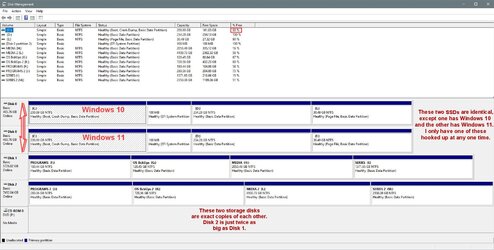- Local time
- 10:16 PM
- Posts
- 1,992
- OS
- Windows 10 Pro
To restore an image file to a source machine, you need to boot your machine from a recovery disk and that has its own set of issues.
Keep your image file nonetheless, but how about restoring the image file to an internal backup disk drive and simply swap drives if disaster strikes?
How do I best implement the idea? What backup disk drive is the most benign for a restore that is done outside of the (desktop) machine housing? I am guessing an internal SATA SSD as a mature (yet still fast) technology, but I am not sure. How does the external restore setup look like? The reason I ask is that I need to experiment outside of the housing while minimizing the work to be done inside of the housing, I am not good at the latter at all
Keep your image file nonetheless, but how about restoring the image file to an internal backup disk drive and simply swap drives if disaster strikes?
How do I best implement the idea? What backup disk drive is the most benign for a restore that is done outside of the (desktop) machine housing? I am guessing an internal SATA SSD as a mature (yet still fast) technology, but I am not sure. How does the external restore setup look like? The reason I ask is that I need to experiment outside of the housing while minimizing the work to be done inside of the housing, I am not good at the latter at all
My Computer
System One
-
- OS
- Windows 10 Pro



















